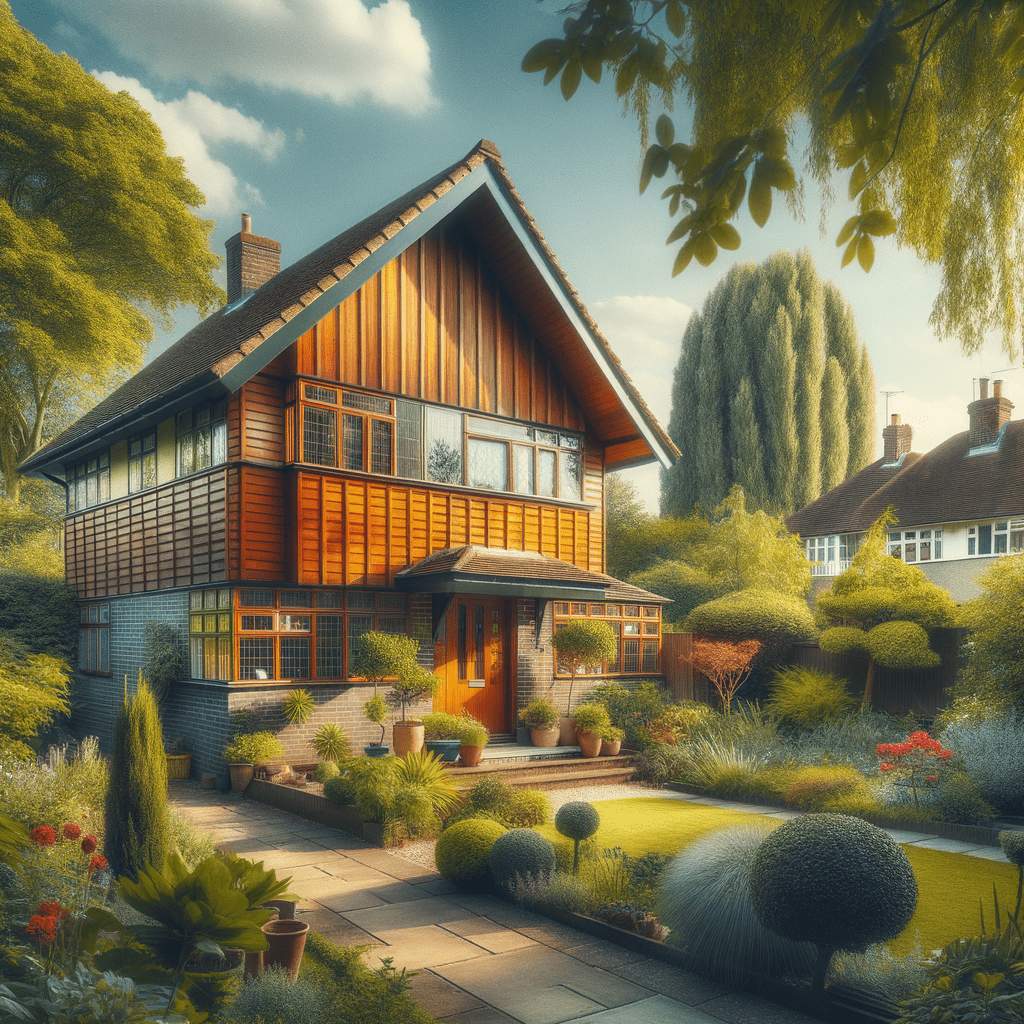Unveiling the Fredericks Cedarwood House: A Comprehensive Guide for UK Home Buyers and Investors
Understanding the Fredericks Cedarwood House
The Fredericks Cedarwood house, a distinctive architectural gem from the 1960s, stands as a testament to the innovative spirit of its era. Designed by Maurice R Day & Associates and manufactured by Fredericks & Pelhams Timber Buildings Ltd, these homes are a unique blend of style and functionality. Known for their detached bungalow design, these properties are often found in suburban areas across the UK, offering a quaint yet modern living experience.
Historical Context and Manufacturing Details
The Fredericks Cedarwood houses were primarily constructed during the 1960s, a period marked by a surge in demand for affordable and efficient housing solutions. This demand led to the development of system-built properties, which were designed to be quickly assembled and cost-effective. Fredericks & Pelhams Timber Buildings Ltd, a prominent name in the construction industry at the time, spearheaded the production of these homes, ensuring they met the needs of the growing population.
Architectural Characteristics
These homes are easily identifiable by their medium pitch gable roofs covered with tiles and their external walls clad in horizontal or vertical cedar boarding. The design often features L- or T-shaped plan forms with projecting gables, providing a distinctive aesthetic that sets them apart from other properties of the era. The use of cedarwood not only adds to the visual appeal but also offers durability and resistance to the elements.
Construction Details
The construction of Fredericks Cedarwood houses is a fascinating study in mid-20th-century building techniques. The substructure typically consists of concrete strip footings and concrete under-building, providing a solid foundation. The external walls are constructed using a platform frame method, with storey-height timber frame panels overlaid with breather paper and directly clad with horizontal timber boarding. Inside, the walls are lined with plasterboard, and mineral fibre insulation is placed between the frame studs to enhance thermal efficiency.
The ground floor is usually made of concrete, while the roof is supported by timber trusses, covered with bituminous felt and tiles. This combination of materials and construction techniques ensures that the Fredericks Cedarwood houses are both sturdy and energy-efficient.
Potential Hazards and Risks
While the Fredericks Cedarwood houses offer numerous benefits, potential buyers should be aware of certain hazards and risks associated with this property type. One of the primary concerns is the potential for timber decay, particularly in areas where moisture can accumulate. Regular maintenance and inspections are crucial to prevent and address any issues related to timber deterioration.
Additionally, the insulation materials used in these homes may not meet modern standards, potentially leading to higher energy costs. Upgrading the insulation can significantly improve the home’s energy efficiency and reduce utility bills.
Defective Premises Act Considerations
It’s important to note that the Fredericks Cedarwood houses are not classified as defective under the Defective Premises Act. However, this does not exempt them from the need for regular inspections and maintenance. Ensuring that the property is in good condition and free from defects is essential for maintaining its value and ensuring the safety of its occupants.
Inspection Tips for Fredericks Cedarwood Houses
When inspecting a Fredericks Cedarwood house, there are several key areas to focus on to ensure the property is in good condition:
-
Roof Inspection: Check for any signs of damage or wear on the tiles and bituminous felt. Ensure that the timber trusses are in good condition and free from rot or insect infestation.
-
Wall Examination: Inspect the cedar boarding for any signs of decay or damage. Pay particular attention to areas where moisture may accumulate, such as around windows and doors.
-
Foundation Check: Examine the concrete strip footings and under-building for any cracks or signs of movement. This can indicate potential structural issues that need to be addressed.
-
Insulation Assessment: Evaluate the condition of the mineral fibre insulation between the frame studs. Consider upgrading to modern insulation materials to improve energy efficiency.
-
Interior Inspection: Check the plasterboard lining for any signs of damage or moisture intrusion. Ensure that the timber stud partitions are in good condition and free from defects.
Common Defects in Fredericks Cedarwood Houses
Despite their many advantages, Fredericks Cedarwood houses can be prone to certain defects. Some of the most common issues include:
-
Timber Decay: As mentioned earlier, timber decay is a significant concern, particularly in areas exposed to moisture. Regular inspections and maintenance can help prevent this issue.
-
Insulation Inefficiency: The original insulation materials used in these homes may not meet modern standards, leading to higher energy costs. Upgrading the insulation can improve the home’s energy efficiency.
-
Roofing Issues: Over time, the tiles and bituminous felt on the roof may become damaged or worn, leading to leaks and water damage. Regular roof inspections and maintenance are essential to prevent these issues.
-
Foundation Cracks: Cracks in the concrete strip footings and under-building can indicate potential structural issues. It’s important to address these problems promptly to prevent further damage.
Conclusion
The Fredericks Cedarwood house is a unique and charming property type that offers a blend of style and functionality. While these homes are not classified as defective under the Defective Premises Act, potential buyers should be aware of the potential hazards and risks associated with this property type. Regular inspections and maintenance are crucial to ensuring the home’s longevity and safety.
At Flettons, we’re committed to safeguarding your investment. When considering a property purchase, trust our seasoned expertise to reveal any hidden threats. For a thorough building survey, get your instant quote through our quote calculator or reach out directly at 0203 691 0451. Your home’s safety is our top priority.

